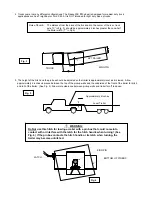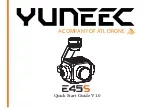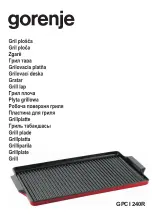
1. Lubricate skid plate surface of the hitch (see figure on cover of Manual) with automotive type chassis grease or use a plastic lube
plate to provide a lubricated surface. Plastic lube plates (Reese No. 74295) can be used to avoid messy grease. The plastic lube
plate must not exceed 3/16 of an inch in thickness to ensure hitch will operate properly. Lube plates must be 10 inches in
diameter or larger to properly distribute king pin weight. Use engine oil or spray lube to lubricate pivot points of moving parts
within the hitch. (See Fig. 19 - 22)
2. Before each trip or maneuver, operate the handle and check that the jaws open and close freely.
3. Visually check all bolts and nuts fastening the hitch system to the truck bed and frame to be sure they are tight.
4. See that all hitch pins are in place and the spring retaining pins are installed.
5. Visually check head pivot connection (26). Inspect cotter pins (34) in pivots to make sure they are in place and in good condition
(See Fig. 21).
WARNING:
FAILURE TO FOLLOW THESE INSTRUCTIONS MAY RESULT IN DEATH OR SERIOUS INJURY.
1. Place blocks (sometimes called “chocks”) firmly against front and rear of each trailer wheel to prevent any possible forward or
rearward motion. DO NOT REMOVE BLOCKS UNTIL EACH OF THE FOLLOWING STEPS AND THE PULL TEST HAVE BEEN
COMPLETED. Lower tailgate if necessary.
2. Using trailer jacks, adjust trailer height following the directions in the trailer manual so that bottom of trailer pin box (“A” in Fig. 8)
is ½ to 1 inch below skid plate (See “B” in Fig. 8). During the hitching maneuver, the bottom of the trailer pin box should come in
contact with skid plate ramp (“C” in Fig. 8).
BEFORE EACH TRIP:
HITCHING PROCEDURE:
Fig. 8
CORRECT
Bottom of Pin Box (A)
1/2 To 1 Inch Below
Hitch Skid Plate (B)
Skid Plate Ramp (C)
Hitch Skid Plate (B)
Bottom of Pin Box (A)
Bottom of Pin
Box Above
Hitch Skid Plate
Fig. 9
WRONG
IMPORTANT:
YOU ARE RESPONSIBLE FOR SAFE HITCHING AND UNHITCHING OPERATIONS. DO NOT RELY ON
OTHERS TO PERFORM YOUR DUTIES. YOU MUST PERSONALLY MAKE SURE THE FOLLOWING STEPS
ARE PERFORMED IN THE FOLLOWING ORDER!
WARNING:
Failure to follow this instruction may result in king pin being too high and coming to rest on top of closed
jaws or not completely inside jaws. (See Fig. 9). This could result in trailer separating from hitch. Trailer
separation may result in death or serious injury if anyone is under the trailer or between truck and trailer
when separation occurs.





























